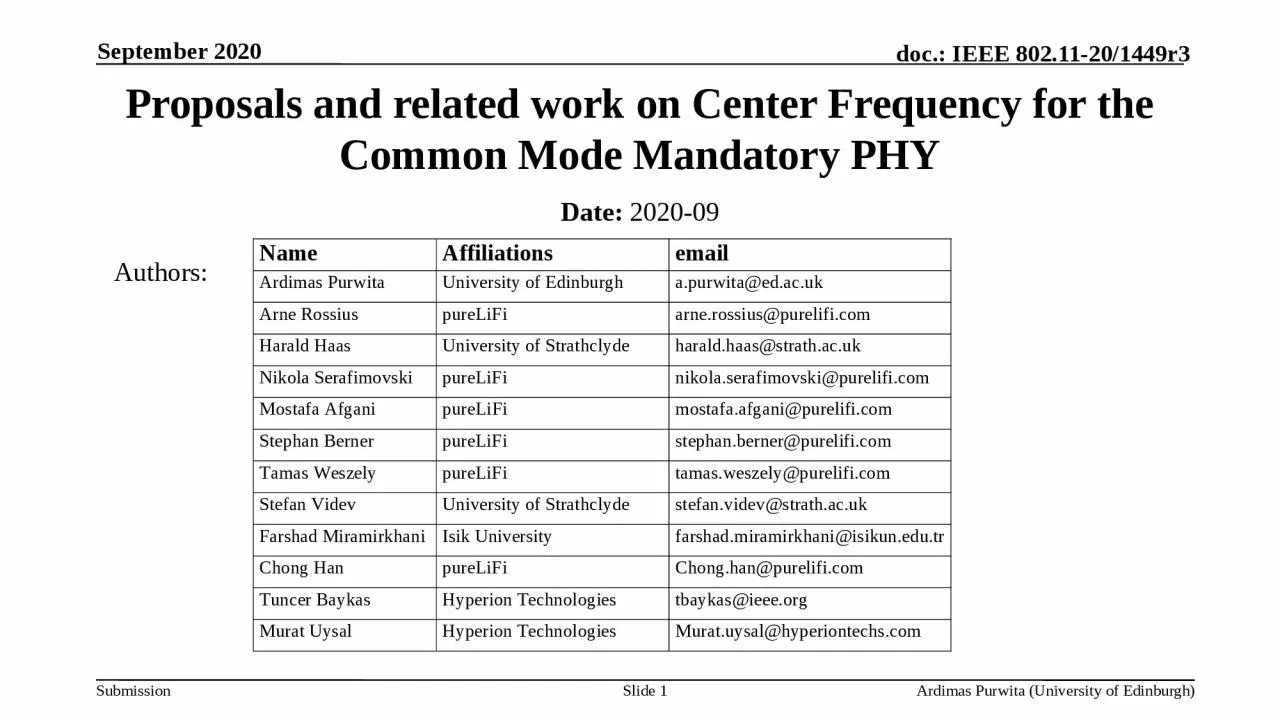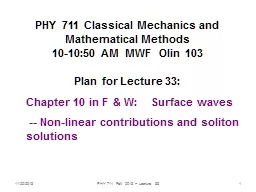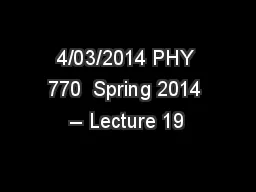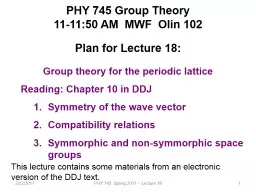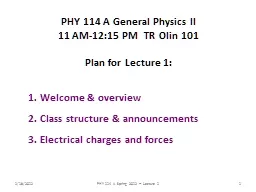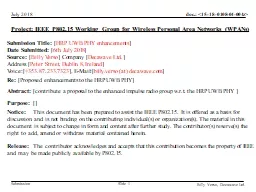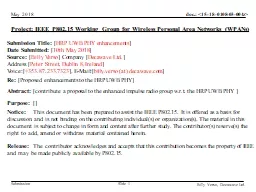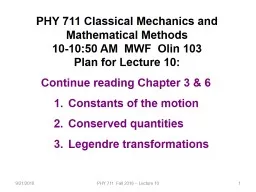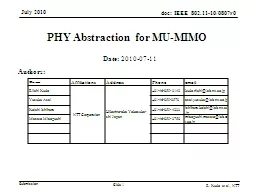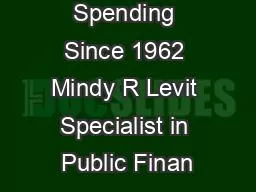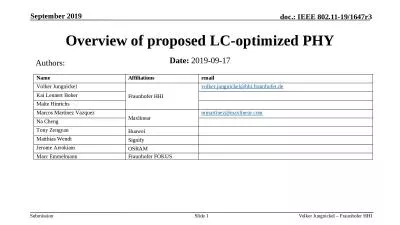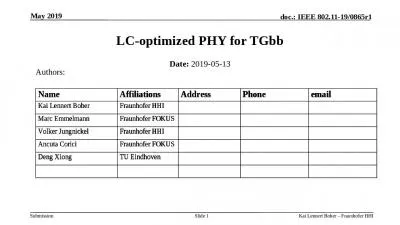PPT-Proposals and related work on Center Frequency for the Common Mode Mandatory PHY
Author : desha | Published Date : 2024-02-09
Authors Date 202009 September 2020 Ardimas Purwita University of Edinburgh Slide 1 Abstract This presentation reviews the proposals and related work on the optimal
Presentation Embed Code
Download Presentation
Download Presentation The PPT/PDF document "Proposals and related work on Center Fre..." is the property of its rightful owner. Permission is granted to download and print the materials on this website for personal, non-commercial use only, and to display it on your personal computer provided you do not modify the materials and that you retain all copyright notices contained in the materials. By downloading content from our website, you accept the terms of this agreement.
Proposals and related work on Center Frequency for the Common Mode Mandatory PHY: Transcript
Download Rules Of Document
"Proposals and related work on Center Frequency for the Common Mode Mandatory PHY"The content belongs to its owner. You may download and print it for personal use, without modification, and keep all copyright notices. By downloading, you agree to these terms.
Related Documents

